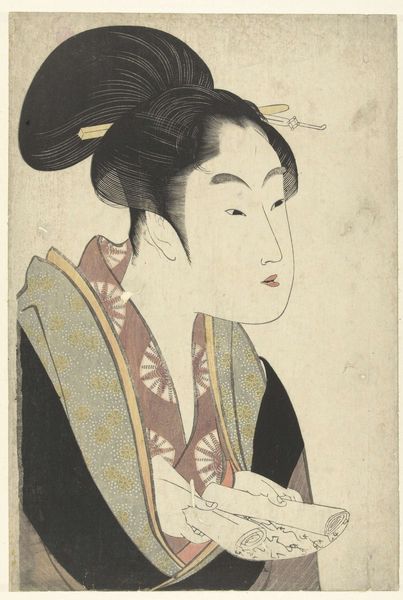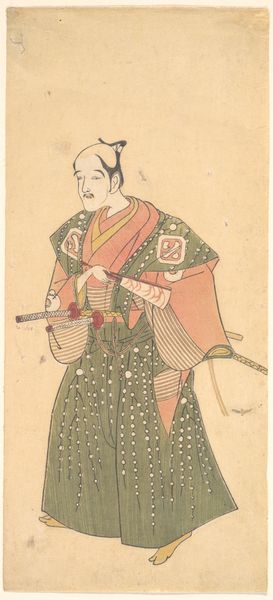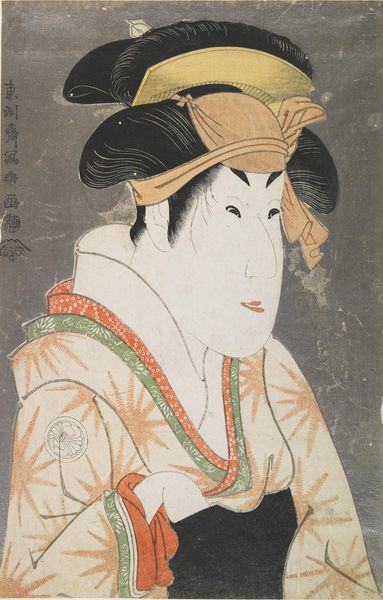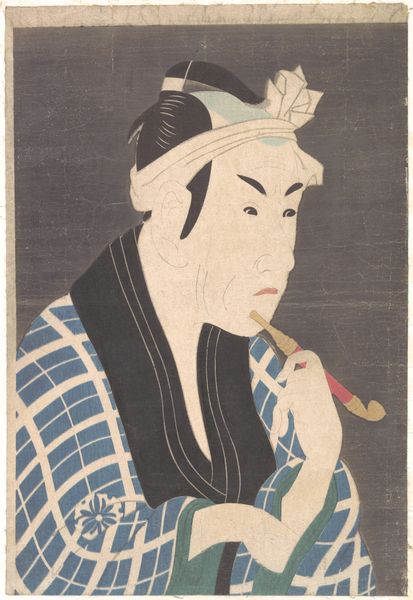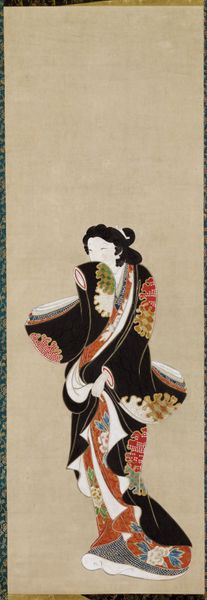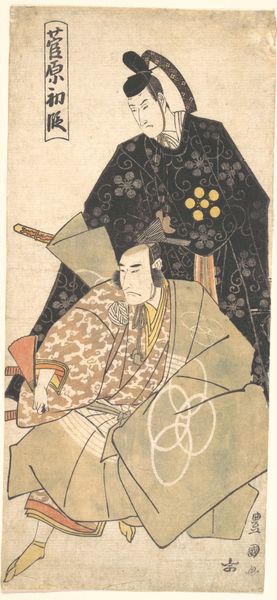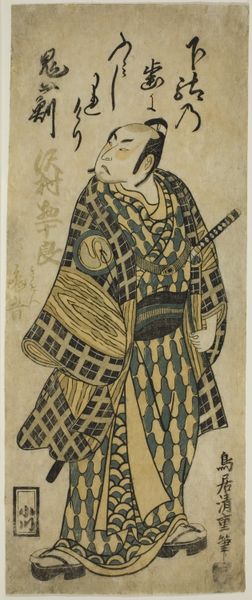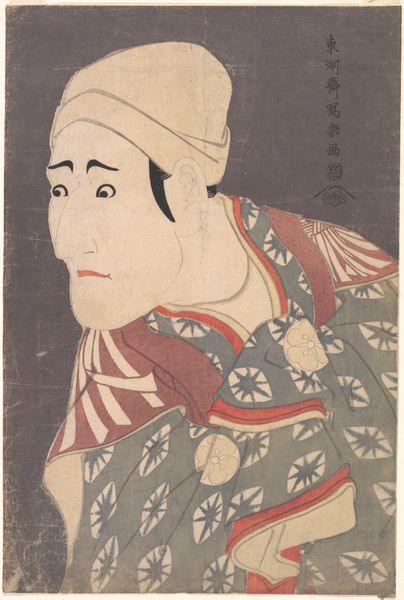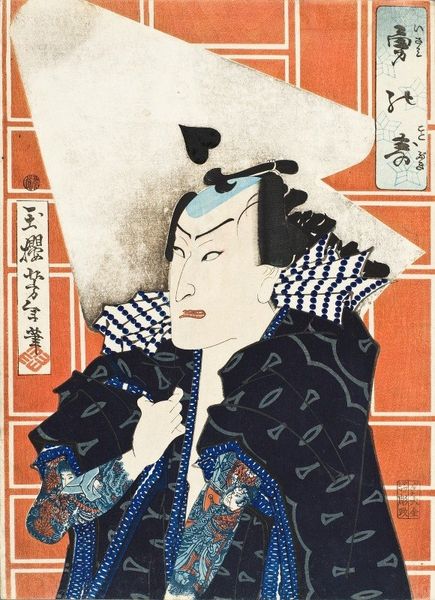
Copyright: Public domain Japan
Curator: Alright, let’s dive into "Le Mandarin Aux Lunettes. Mandchoukuo," a print created by Paul Jacoulet around 1950. First impressions? Editor: Intriguing! It feels almost… nostalgic. There’s a sense of quiet dignity, but with a quirky edge. Those glasses just dangling there—it's as if he's interrupted something, or maybe he’s about to. Curator: Exactly! Jacoulet was fascinated by the cultures he encountered across Asia, and he used ukiyo-e techniques, Japanese woodblock printing, to portray them. Consider the time. Post-World War II. How are power dynamics depicted, perhaps subverted, with this "mandarin" holding western eyeglasses? Editor: Good point. Those dragons swirling on his robe seem powerful, majestic, but there’s almost a wistful quality to his expression, an uncertainty? The soft watercolors give the print such a gentle feeling, as if a memory of a fleeting moment. Also, why French? He signs the print "Le Mandarin" rather than the Chinese title, is that an observation on cultural appropriation? Curator: It definitely opens up avenues for interpretation. The blend of Asian artistic techniques with European perspectives—French title, a foreign artist presenting what would have been a colonized, occupied territory in Manchuria—makes it historically complex. Editor: Absolutely, there is a delicate balance, this portrait speaks of cultural exchange, but also hints at those layers of colonial power that would impact it. A quiet meditation, a subtle reminder. Curator: Precisely. Jacoulet offers a view on cultural interplay but prompts us to reflect on those complexities, challenging perceptions. Thank you for pointing out so many of its qualities. Editor: My pleasure. It’s one of those artworks that whispers secrets, if you just stop and listen.
Comments
No comments
Be the first to comment and join the conversation on the ultimate creative platform.
